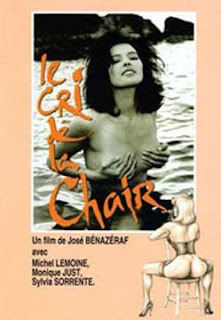While the banning of any film is an unnecessary and fascistic act, the history of such instances will always remain an endless source of fascination and frustration for film fans. Obviously the most famous list of persecuted titles will always be the “Video Nasties”, which sparked one of the most ludicrous outbreaks of moral panic in recent memory. A more contemporary example would the be banning of Kim Ki-duk’s Moebius (2013) in Kim’s home country of South Korea, forcing Kim to make several cuts in order to secure theatrical distribution. In Australia, a country notorious for draconian censorship practices, innumerable films have been refused classification, which is tantamount to banning, one such film being Larry Clark’s Ken Park (2002). In response to this, film critic and TV personality Margaret Pomeranz held a protest screening of the film which was subsequently shout down by the police. Then of course there was the banning of Takashi Miike’s Imprint (2006) by Showtime, a supposedly "uncensored" cable channel. One of the most egregious example of the banning of a film would be the decision by the French censor board to ban José Bénazéraf’s Joë Caligula the night before its intended premier and after it had already been given a rating. Bénazéraf took it personally and rightfully so as Joë Caligula is one of the purest examples of Bénazéraf’s cinematic anarchy and an crucial film in Bénazéraf’s oeuvre.
In an attempt to take over the ranks of organized crime in Paris, “Joe Caligula” (nicknamed as such do to his vanity, penchant for sadism and his incestuous feelings for his sister Brigitte), a young gangster and his crew of thugs wage war on the old guard of the Parisian underworld and get the attention of the established bosses after kidnapping and roughing up one of the big names demanding money. Joe and his crew continue their crusade although they soon go too far, setting fire to another high ranking gangster from a rival gang resulting in an eruption of violence, the consequences of which can only be tragic.
On paper Joë Caligula probably sounds like a fairly straightforward crime film about gang warfare, however with Bénazéraf at the helm the film becomes something else entirely, something wild and transgressive, borderline surreal at times. The film does follow a linear narrative, however Bénazéraf’s off-center sensibilities give way to an unpredictable and stream of consciousness type of storytelling with very few of the characters behaving like normal human beings and Bénazéraf peppering the film with random, matter of fact scenarios such as Joe and his crew posing in new outfits, a dance outbreak in a diner, Brigitte stopping in the middle of a walk to pose like a mannequin outside a storefront window and a classic Bénazéraf striptease performance set to the tune of “I'm Evil” that plays not once but twice. Also typical of Bénazéraf’s films from this period is the distinct lack of dialogue and tense moodiness that results from the moments of silence with Bénazéraf focusing more on the brooding faces of the actors, the languid atmosphere of the film only being broken by the bursts of casual violence and manic free jazz score. What’s incredible is that despite the incidental nature of a good portion of the film, emotional investment comes rather easy, particularly later in the film when the score becomes mournful and Bénazéraf gives Brigitte, easily the most fascinating and enigmatic character in the film, his full attention, leading to a surprisingly heartfelt climax which in turn gives way to the haunting imagery that ends the film.
According to the French censor board, the official reason for the banning of the film was violence however Bénazéraf saw it as politically motivated. Bénazéraf had a habit of giving his characters radical political speeches and in his mind, the banning of Joë Caligula was an attempt to silence him. Bénazéraf stated in Immoral Tales: European Sex and Horror Movies 1956-1984, "It was revenge. Because of my opposition to all that administration and bureaucracy. So they fucked me and they fucked me well." Indeed, as not only did the banning of the film irritate Bénazéraf but it also cost him around two million of his own Francs and left him with 30 prints of the film and no way to distribute. Although it would be about a decade before Bénazéraf fully crossed over into the hardcore adult film market, its been suggested that the films banning planted the seeds for Bénazéraf's decision to leave mainstream cinema behind, having become so fed up with his films being censored. Interestingly, the film is available for streaming via Amazon Instant Video although the film has yet to receive an official English friendly DVD release, so for those who prefer psychical media DVD-R’s will have to do. No matter how the film is viewed what’s important is that Joë Caligula is an essential Bénazéraf title and a must watch for anyone with an interest in fringe cinema.




